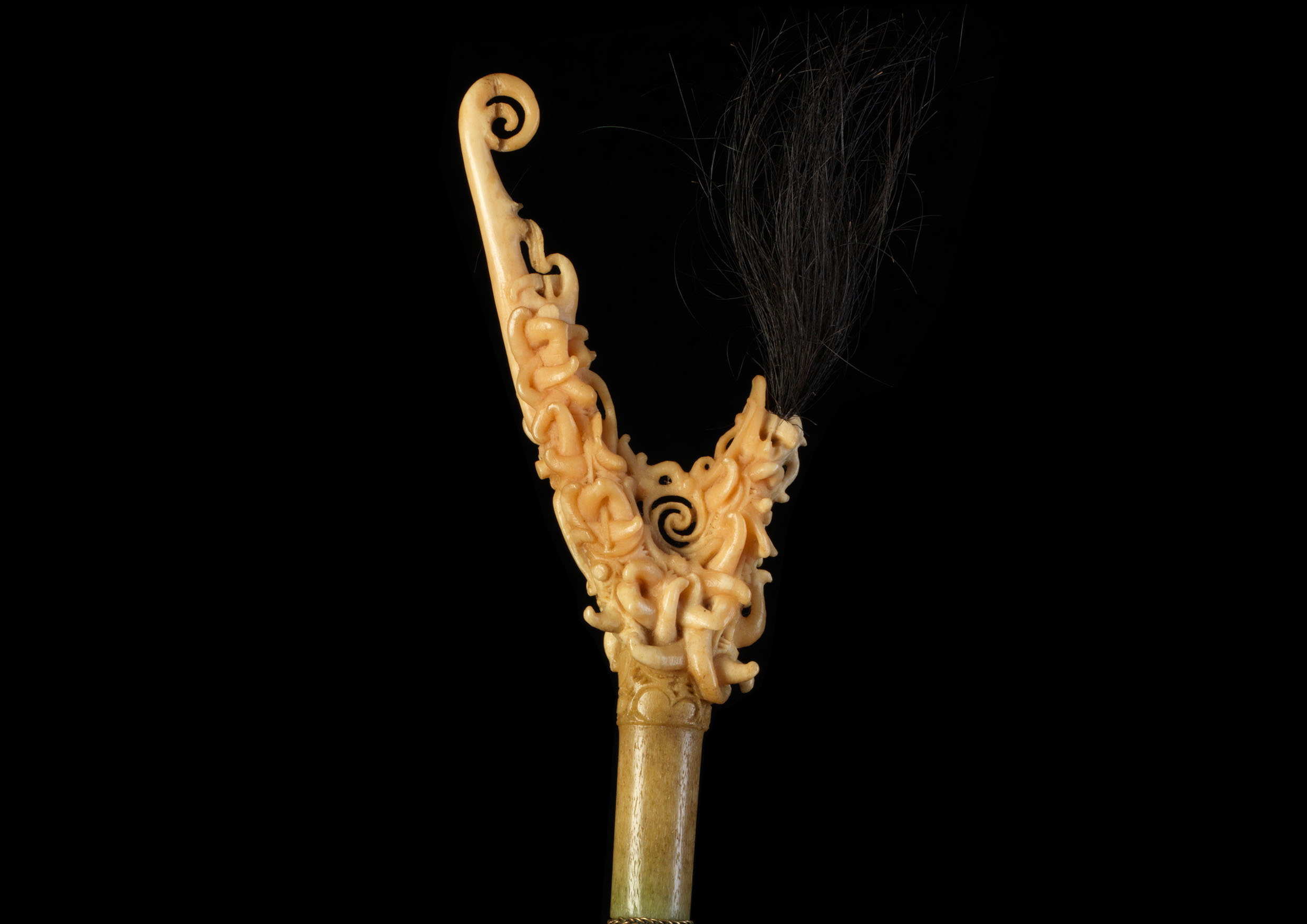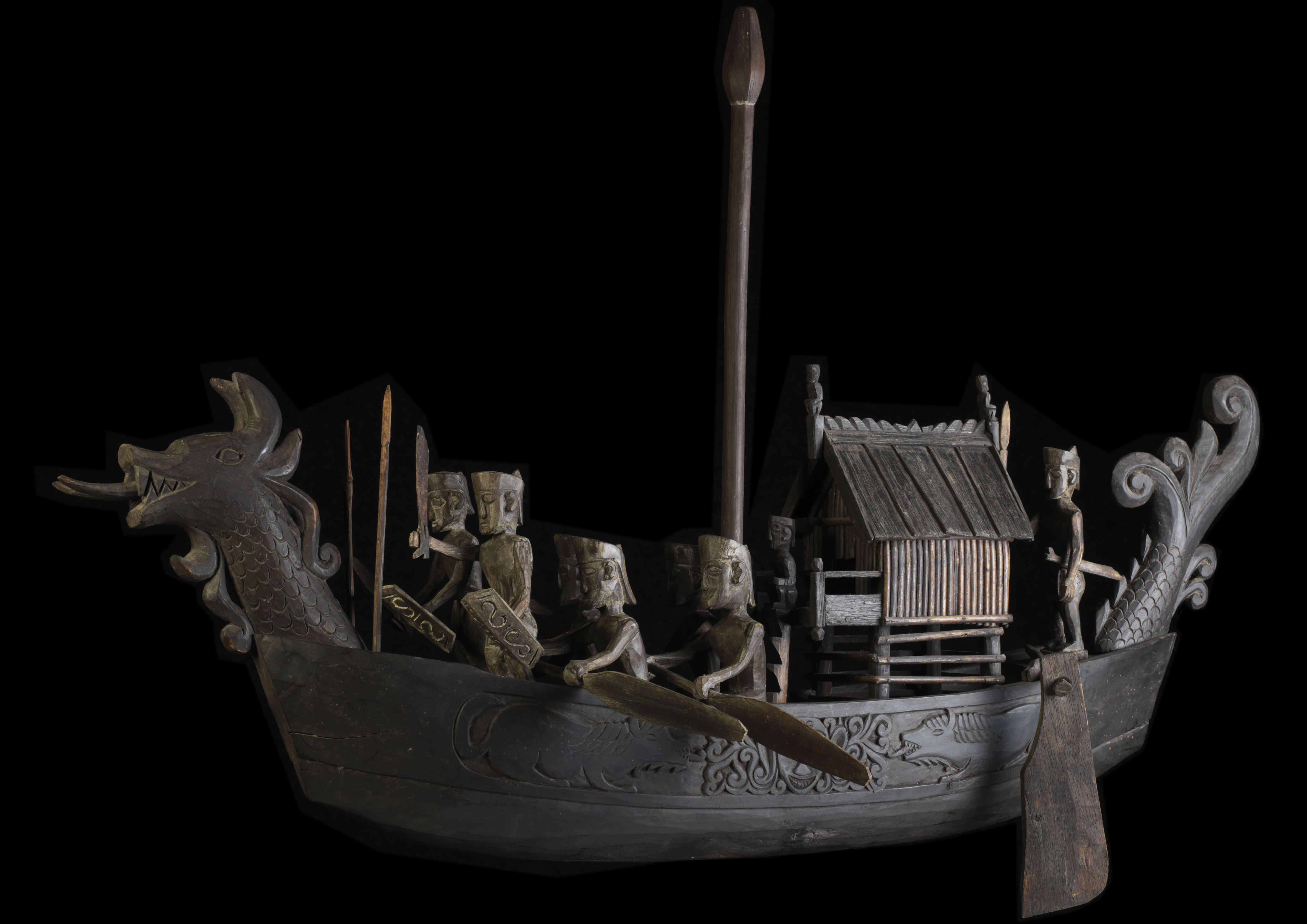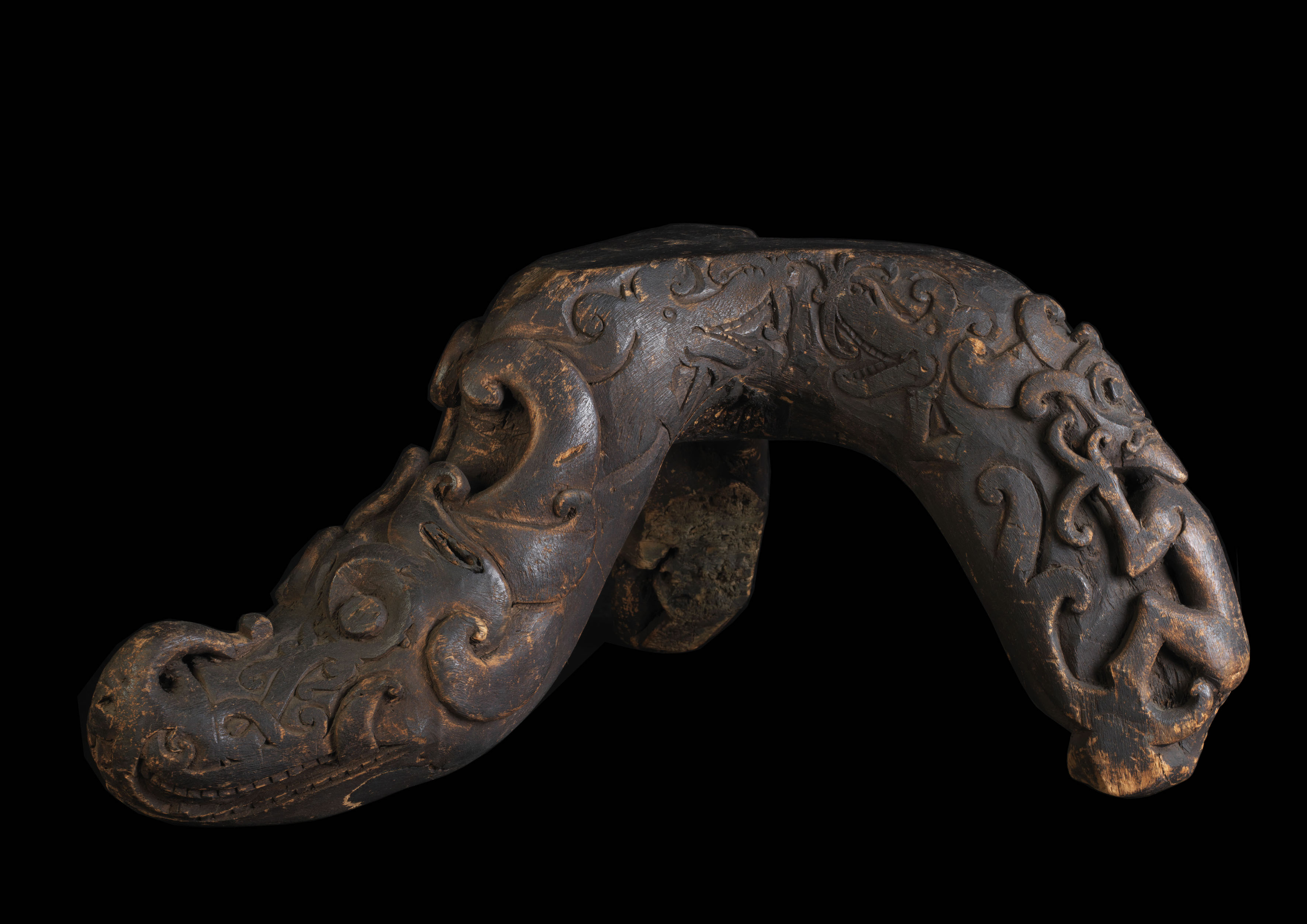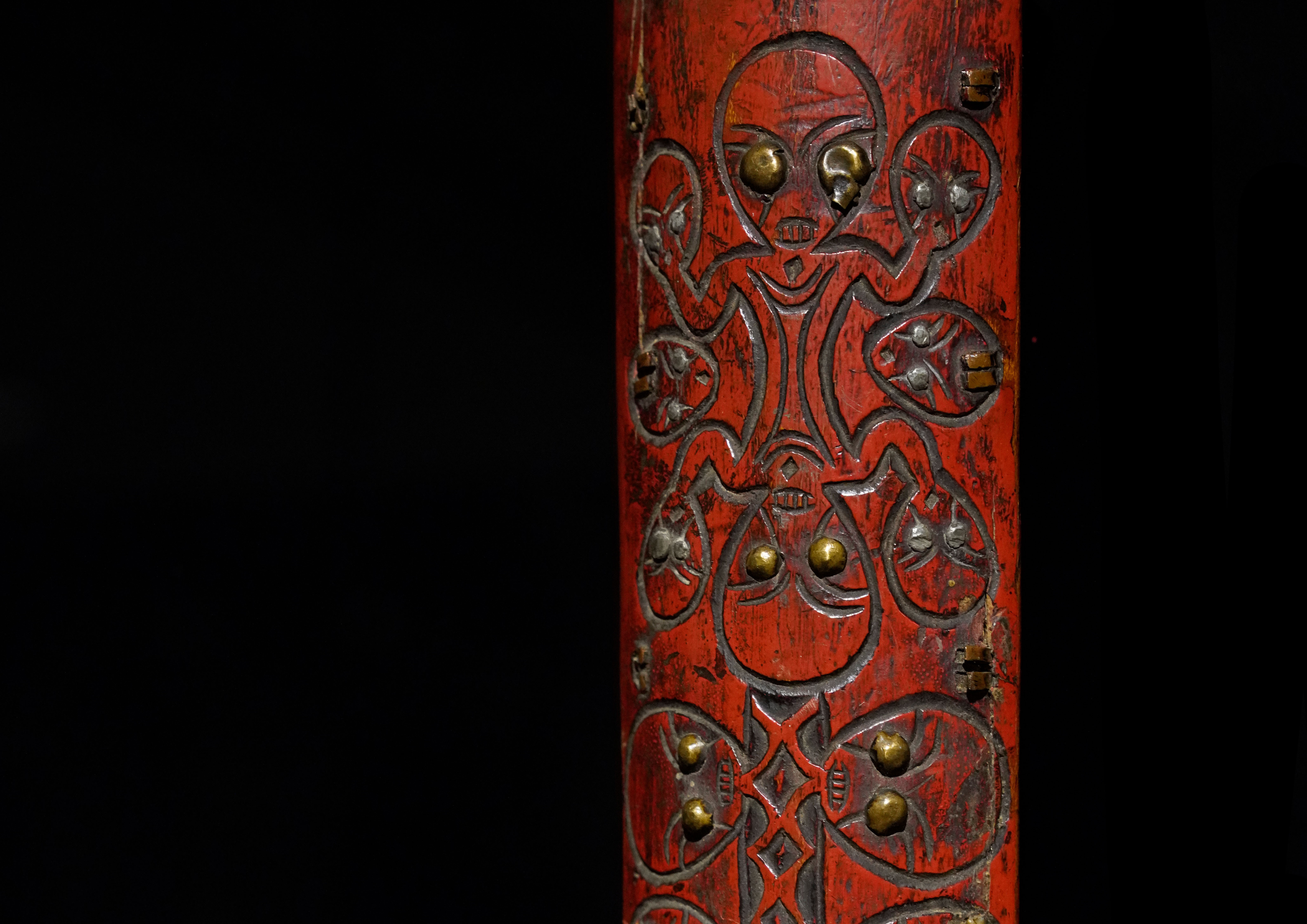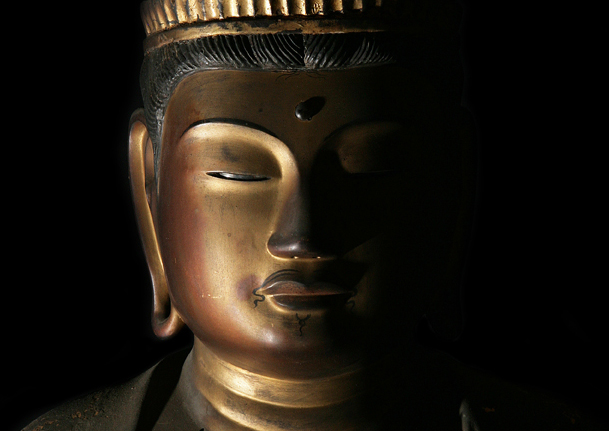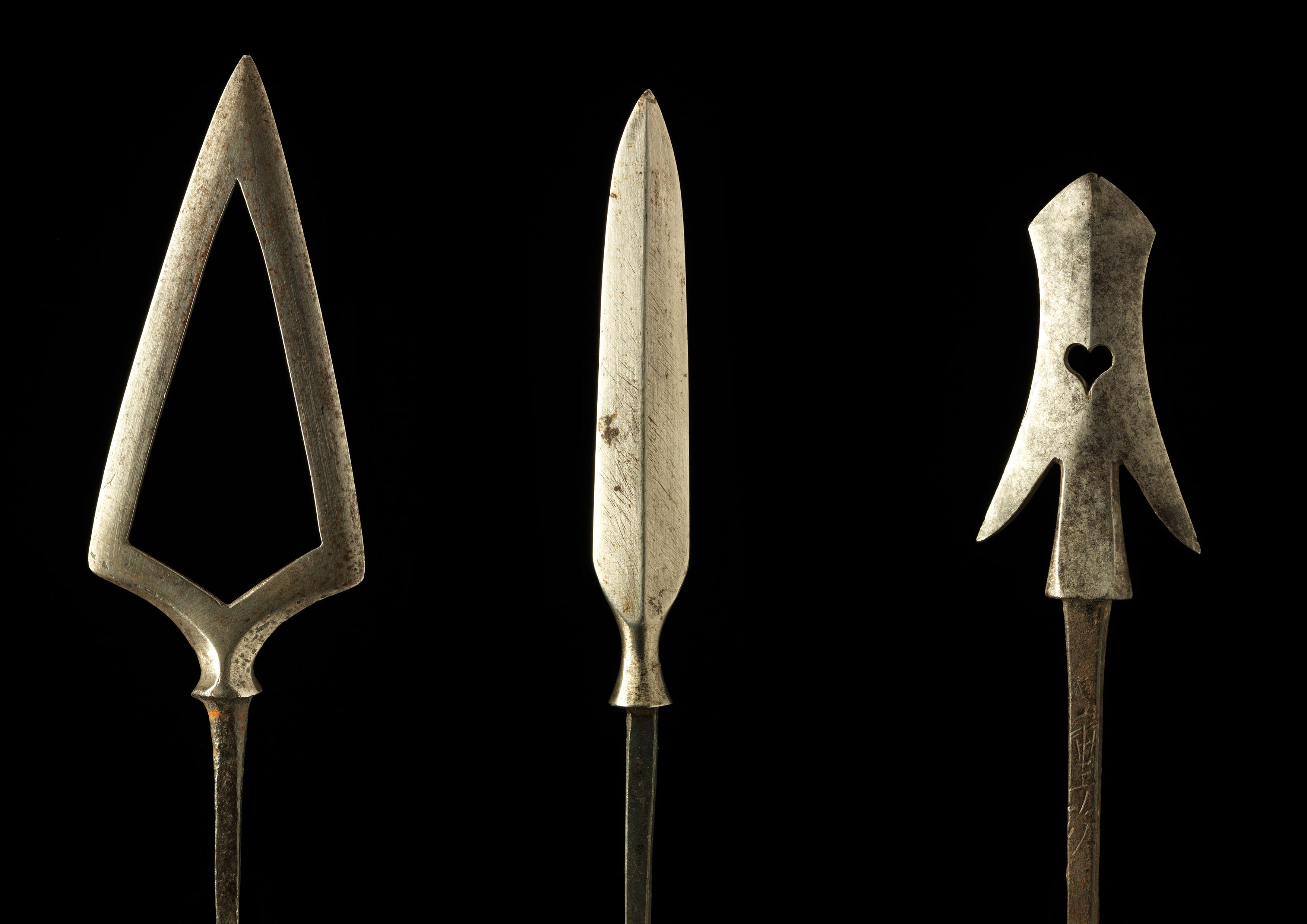Knife Tempesing
Object: nyu, lunggai, tempesing Culture and time: West-Borneo, Sarawak or Kalimantan, Kenyah (possibly Iban), late 19th century / early 20th century Dimensions: Length 35 cm The handle of this extraordinary knife (tempesing or lunggai, literally "feather") can be considered a textbook example of Kenyah carving at the highest level. A carefully selected piece of forked Sambar stag antlers was used, which in this case has practically no porous core. The whole structure is grouped around the central pierced double spiral, which embodies the soul's or the afterlife's journey and the ability to rededicate life energy by the warrior and headhunter. Above the [...]

